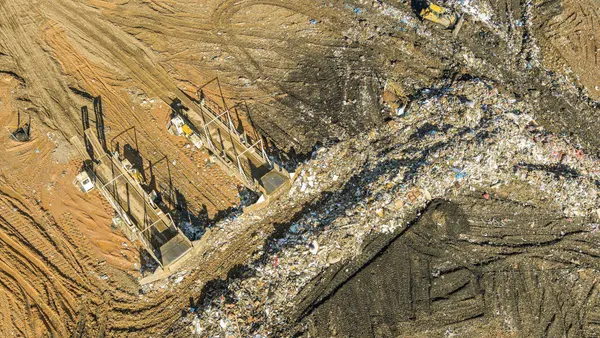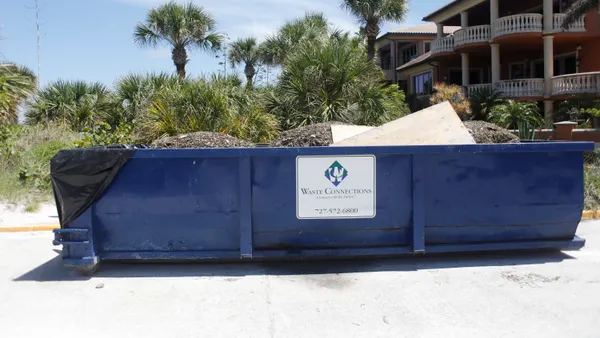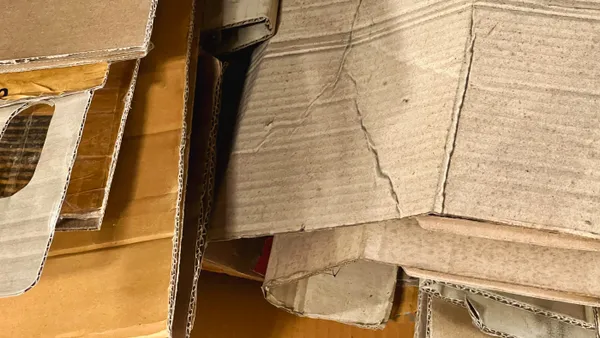Dive Brief:
- Duke Energy has agreed to excavate the majority of its remaining coal ash, announcing a settlement with environmental groups Thursday.
- Eight of the utility's 14 coal plant sites were already slated for full excavation and closure, but the fate of the final six and their eleven ponds has been the subject of tension with environmentalists and others across Duke's North Carolina territory. Now, the utility has agreed to excavate 80 million tons of ash, estimated to be the largest coal ash cleanup in the U.S., with a total of 124 million tons removed.
- State environmental regulators in April ordered Duke to completely excavate those sites but the utility appealed the decision later that month, complaining the order would cost an additional $4-5 billion on top of an estimated $5.6 billion plan. Duke says the current settlement will reduce costs by $1.5 billion, to a projected total of $8-9 billion, by allowing approximately 4 million tons to sit below a landfill and another almost 30 million tons to remain capped in place.
Dive Insight:
Coal ash is a particularly sensitive topic in North Carolina — in 2014, 39,000 tons of the waste poured into the Dan River from a Duke coal ash facility. In 2015, the utility pled guilty in federal court to nine misdemeanors related to its handling of the toxic waste.
Since 2012, the Southern Environmental Law Center (SELC) and other environmental groups have been pushing the utility to commit to full excavation of its coal ash, spurred by smaller spills during Hurricane Matthew in 2016 and Hurricane Florence in 2018. Now, SELC has reached a settlement with the utility and state regulators, on behalf of 10 other environmental groups.
"We think this settlement achieves all the goals we've been pursuing for the last nine years to get this ash safely stored and to eliminate these other unlined pits of coal ash across North Carolina," Frank Holleman, senior attorney at the Southern Environmental Law Center, told Utility Dive.
Increased pressure on the utility from local advocacy groups and years of town hall meetings finally led to the utility's settlement, according to Holleman. Duke's appeal to resist the Department of Environmental Quality's (DEQ) order was partially rejected by a North Carolina judge in August, but the utility says it's satisfied the current plan is what's best for ratepayers and the environment.
"Ours isn’t the only voice in this debate," spokesperson Bill Norton told Utility Dive in an email. "This is the outcome of a collaborative process that we, the state, and the environmental community support. ... It is a reasonable and prudent plan to close the chapter on coal ash and allow us to fully focus on a cleaner energy future."
The current plan will remove the remaining ash at the six disputed plants and move it to lined landfills, though two of the plant sites — the Marshall Steam Station and the Roxboro Plant — will allow some ash to stay underground. The state permitted the utility to build lined landfills over the ponds at those two plants and the settlement agreement allows those landfills to stay in place with the ash under it.
At the Marshall station, about 852,000 tons of ash will remain under the landfill, with 15 million tons capped in place. At Roxboro, 3.2 million tons will remain underground with 14.5 million tons capped in the landfill.
Holleman noted the remaining ash is relatively minor compared to how much is being excavated and the locations are not near critical waterways.
"We don't know what impacts the small remaining amount will have," he said, but noted the sites' groundwater will remain monitored and managed by Duke under the state's oversight.
Duke "will take additional steps to stabilize the material in the basin, monitor surface water and remediate groundwater" at those sites, said Norton.
Excavation is expected to be completed in the next 10 to 15 years. Money for the estimated $8-9 billion plan is expected to be spent over the next 15-20 years, according to the utility. Ash from 12 of the utility's ponds will be recycled, which extends the lifespan of those ponds until 2035.
Environmental groups and utilities have long disagreed about the most effective way to close coal ash ponds in order to prevent drinking water contamination, and Holleman says this plan is further evidence that full excavation is the best way to go.
"This settlement establishes once again that the national standard in the industry for dealing with these unlined coal ash pits is to remove the coal ash from them and put it in safe, dry, lined storage away from the waterways," said Holleman. "At least when coal ash is in groundwater or near a waterway, cap in place is not an acceptable way to close these coal ash lagoons as coal-fired plants close across America."












